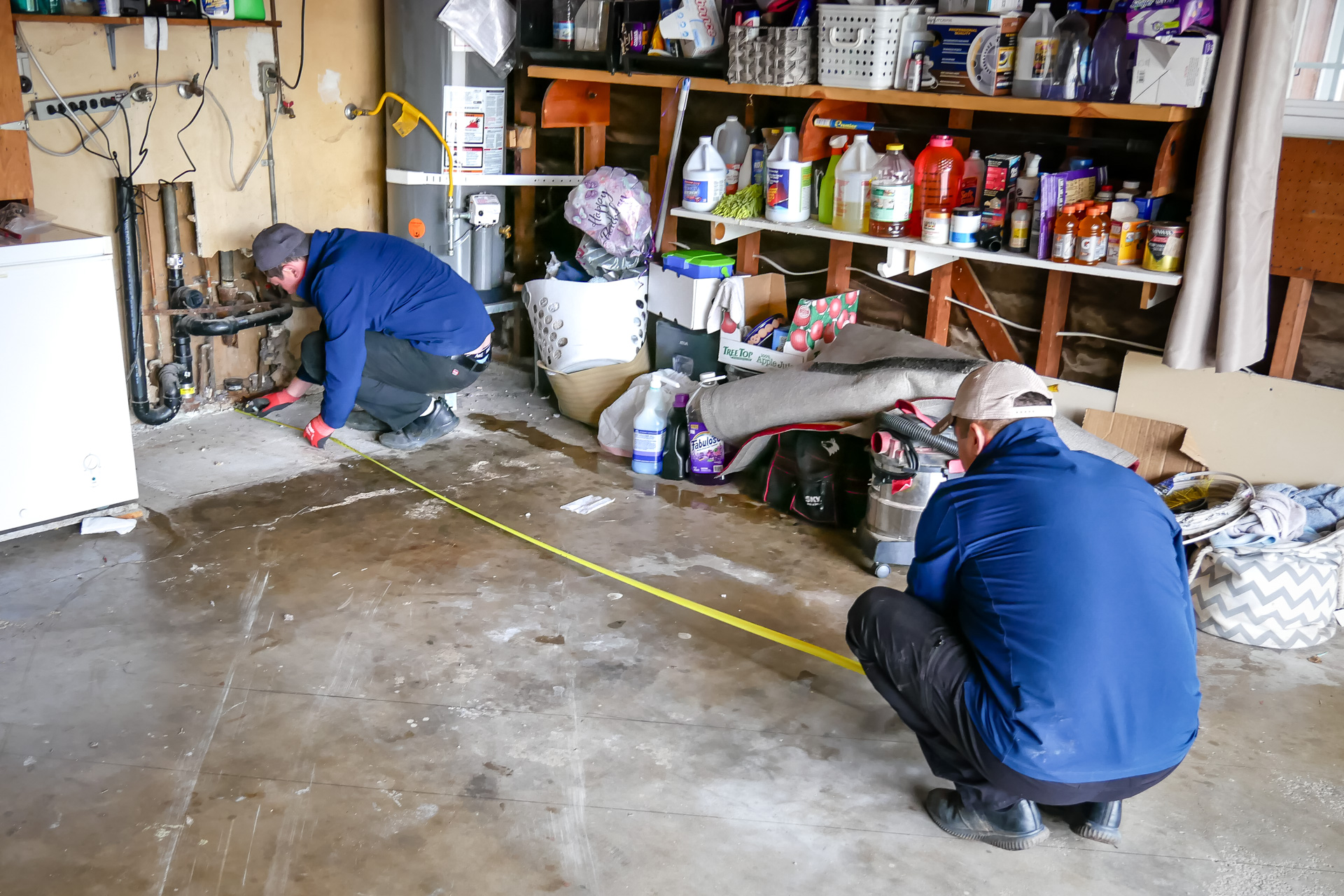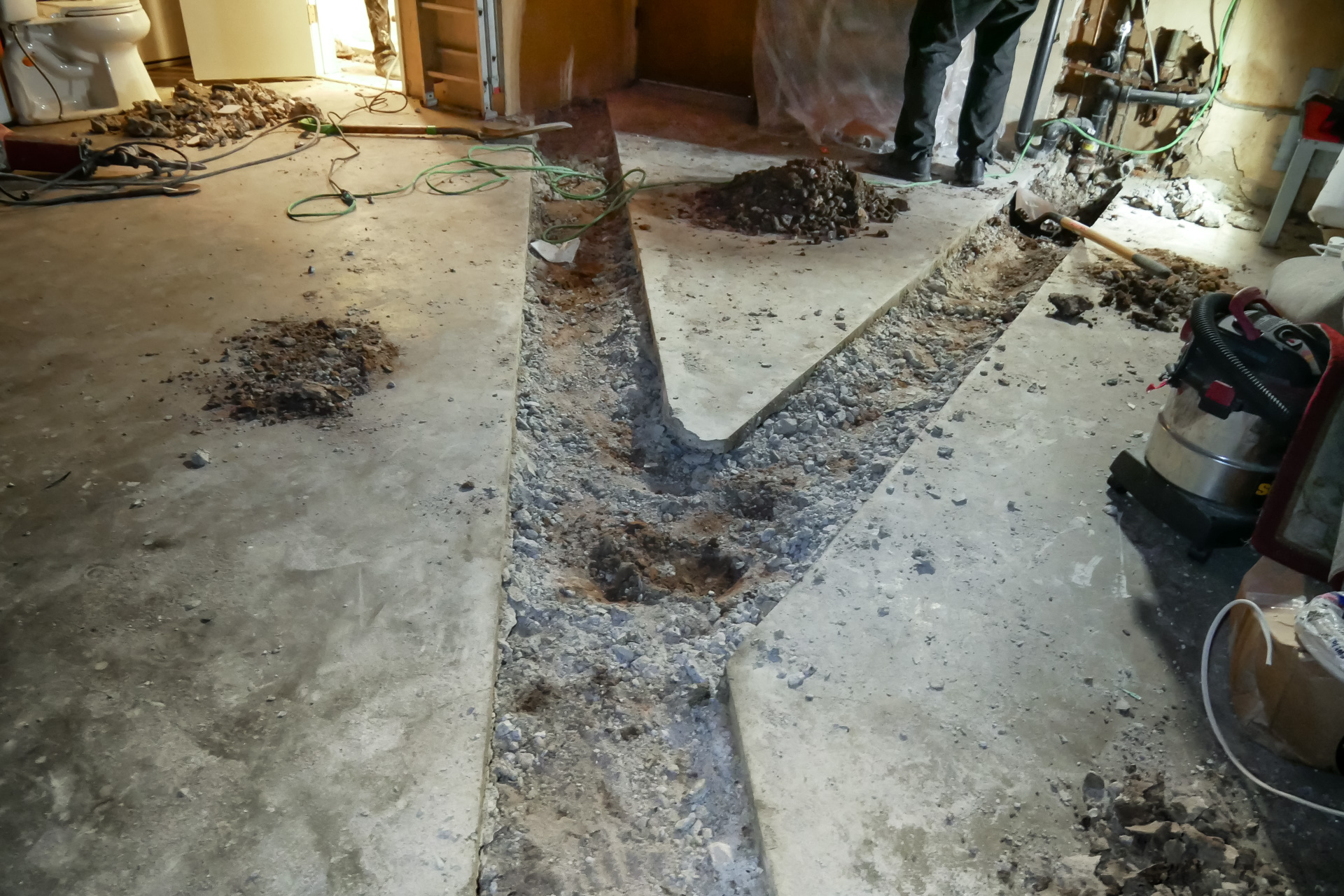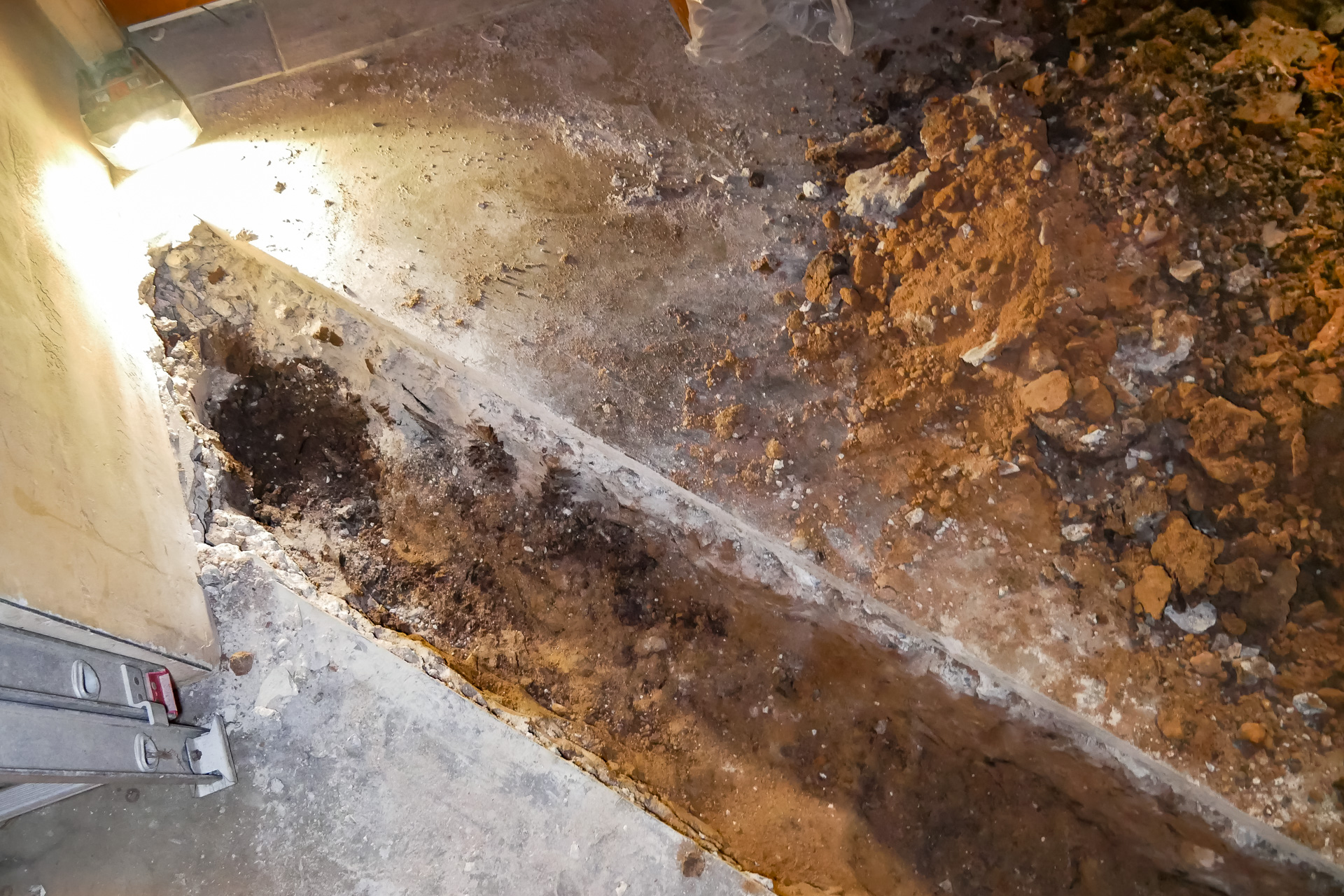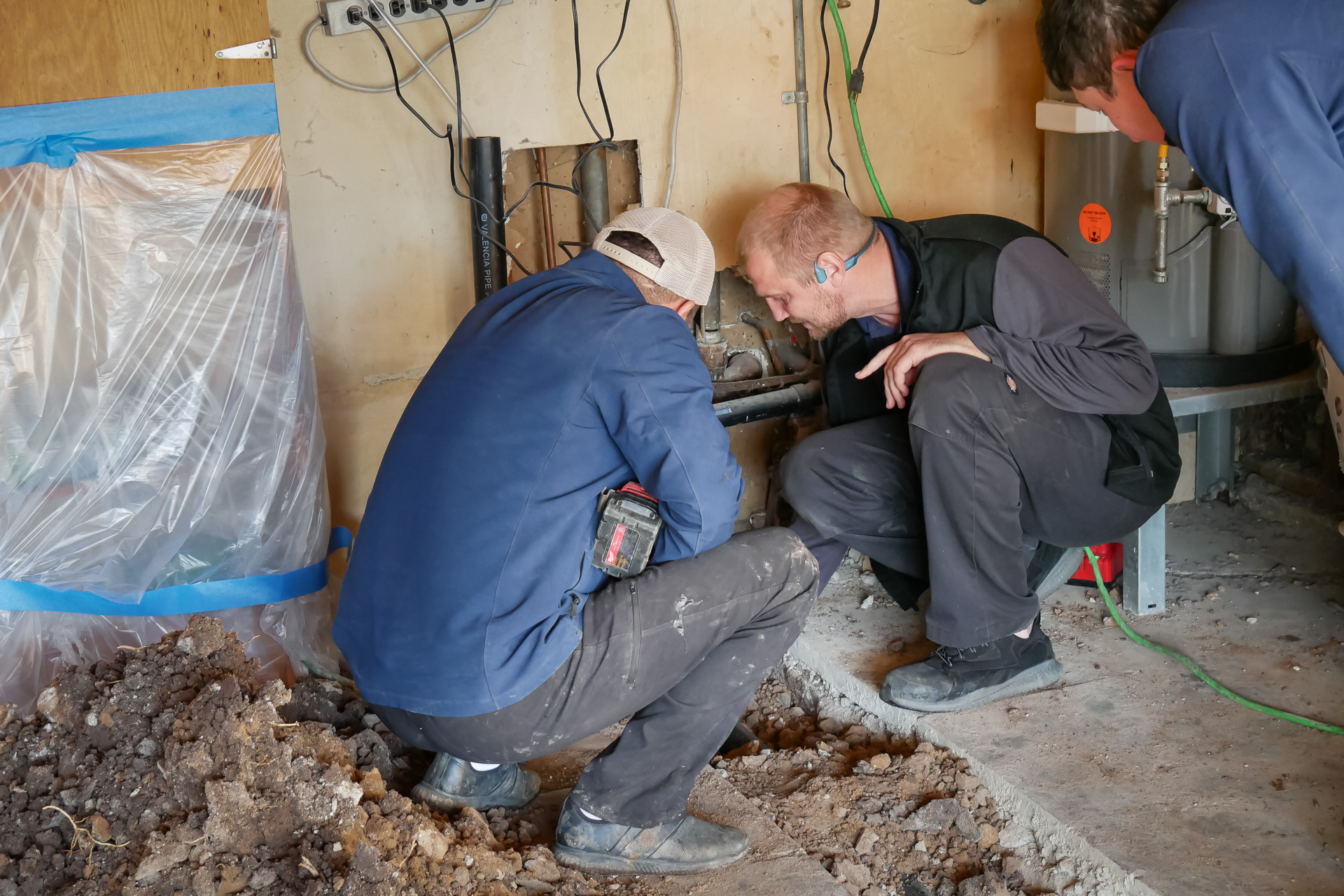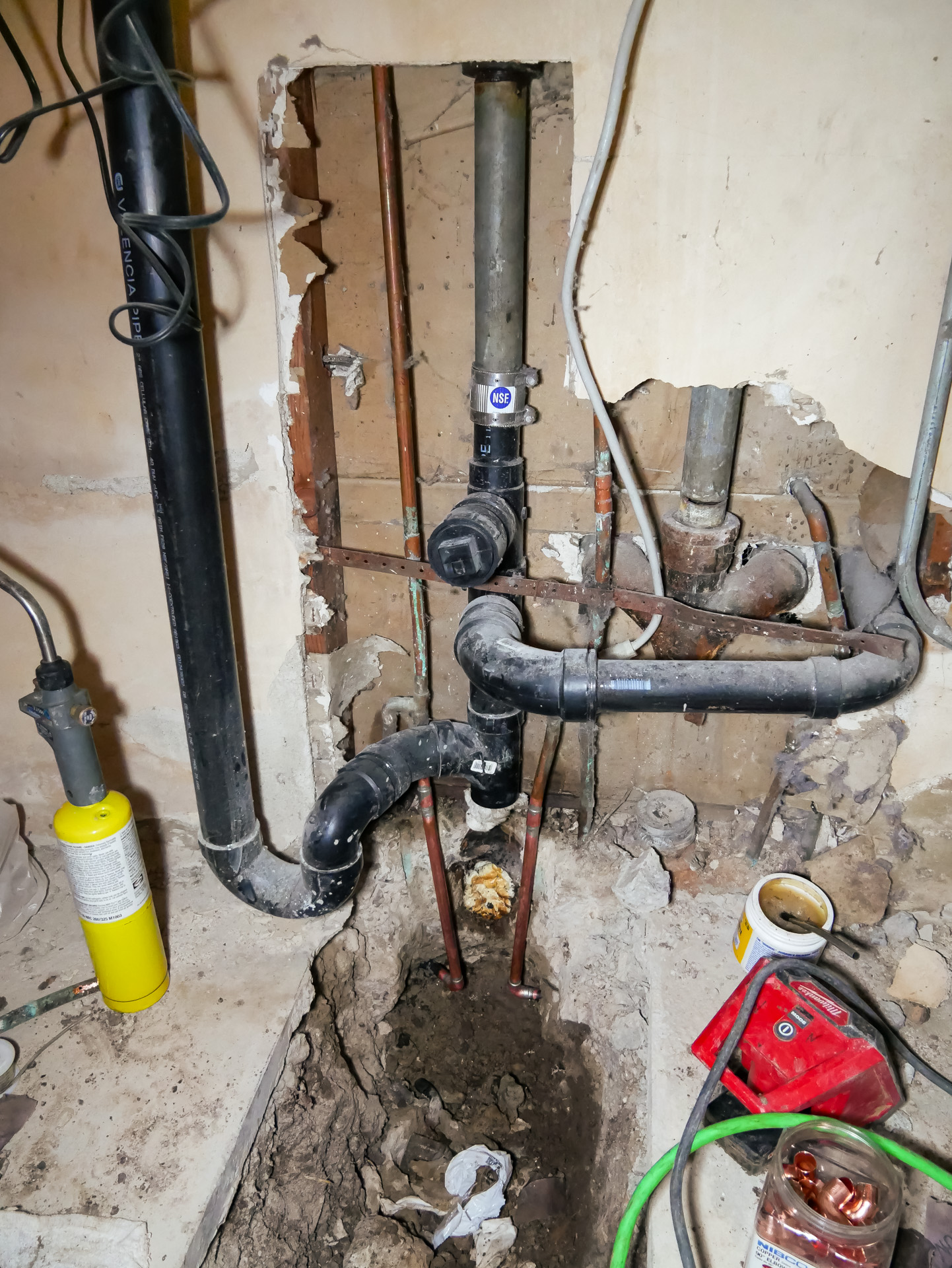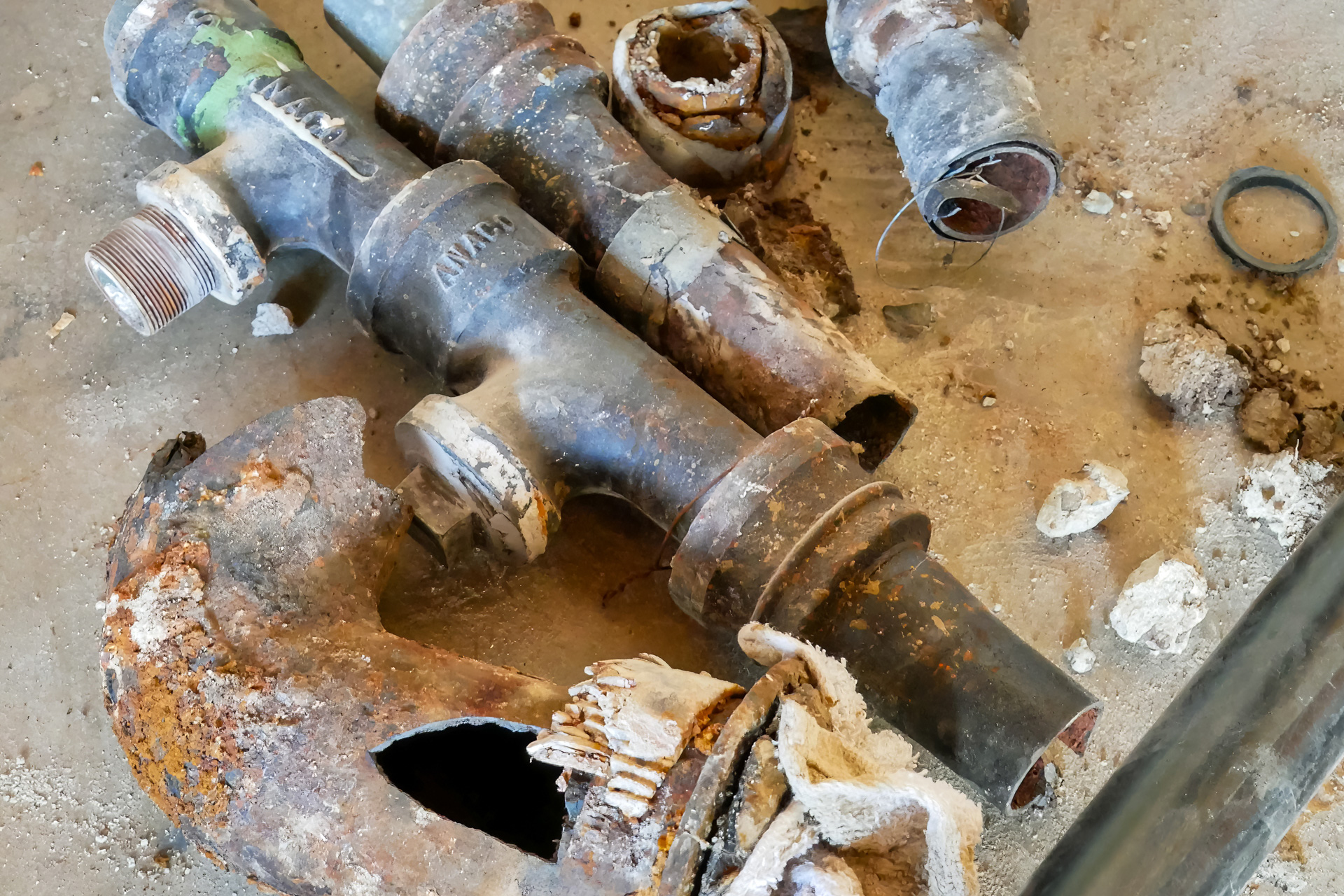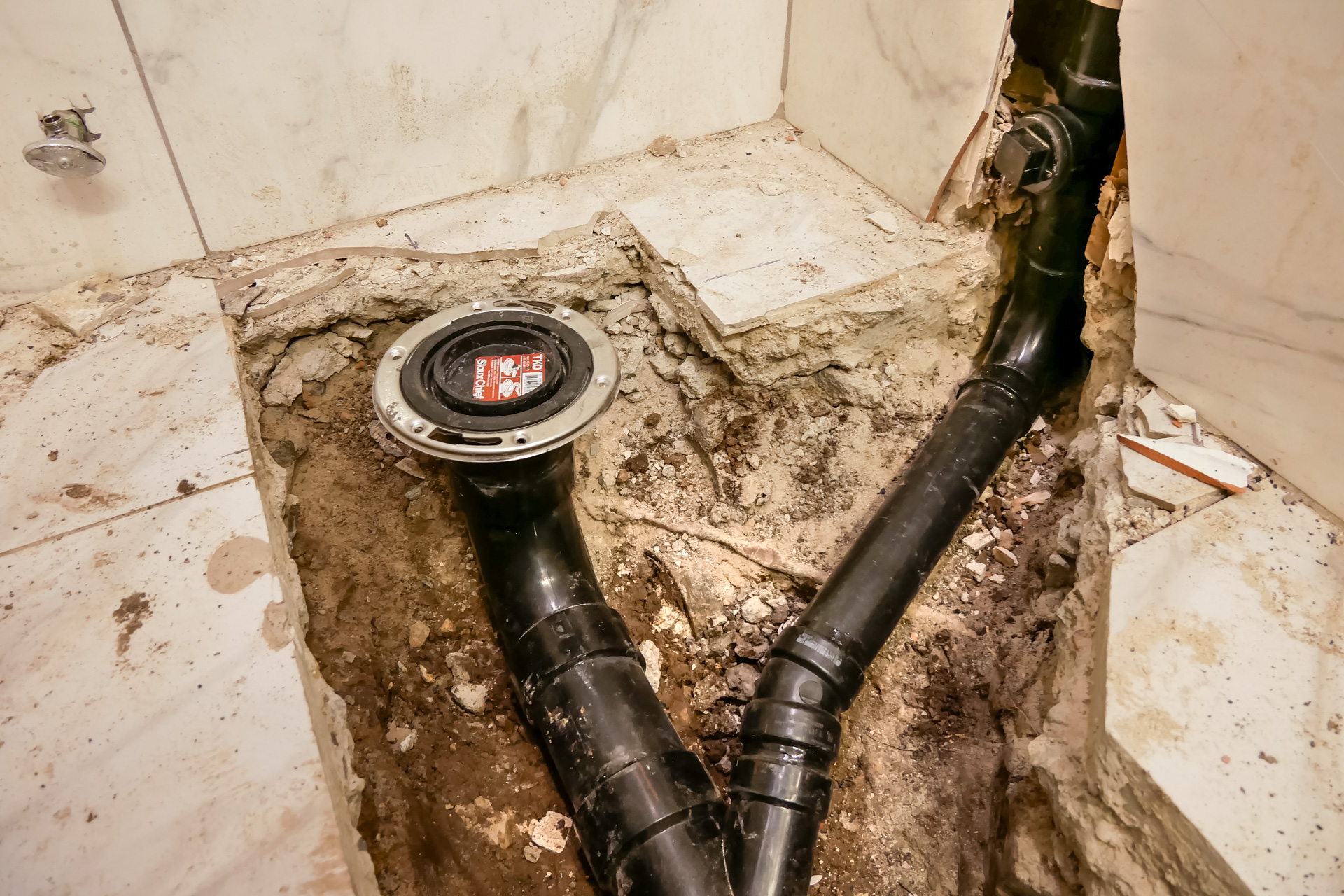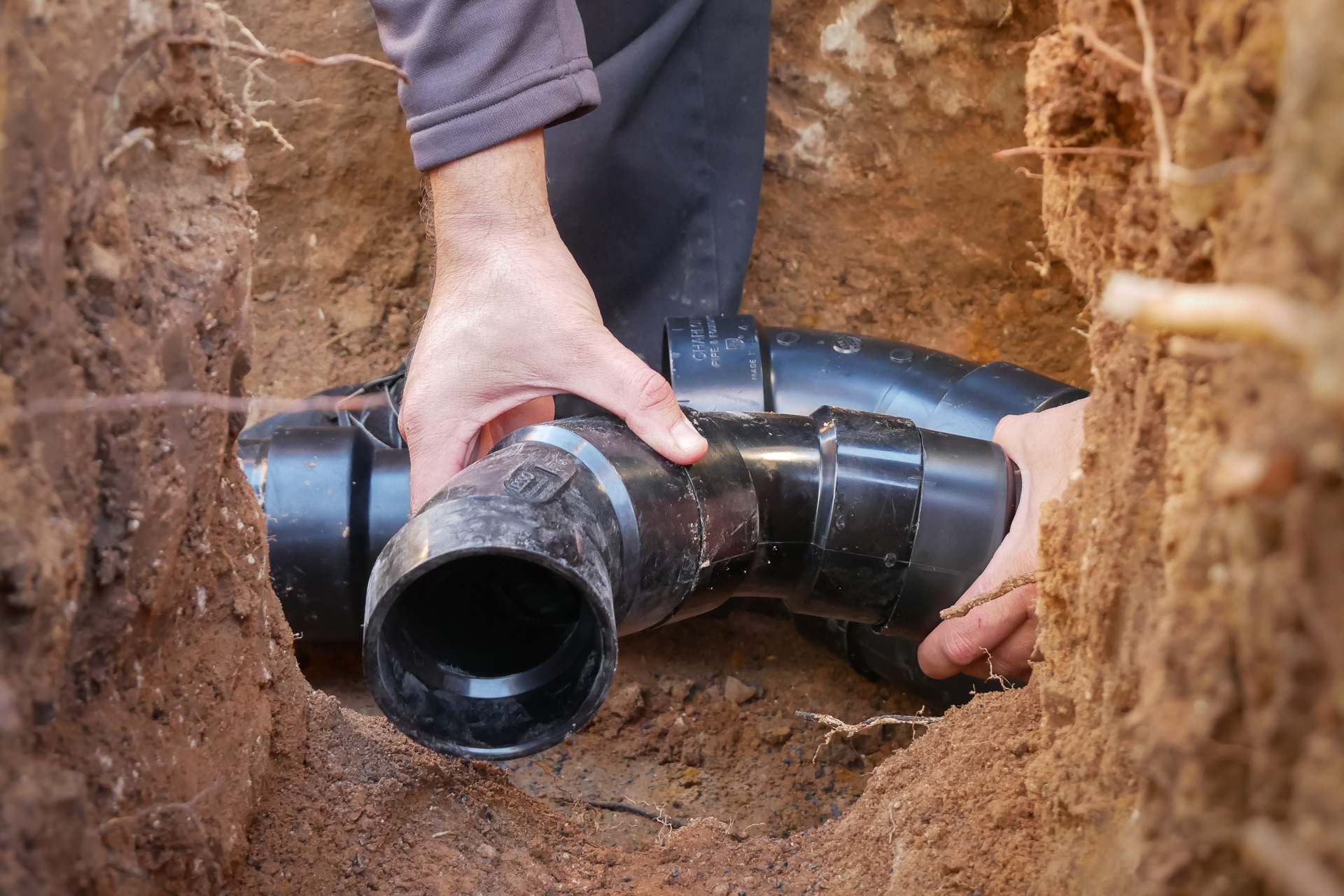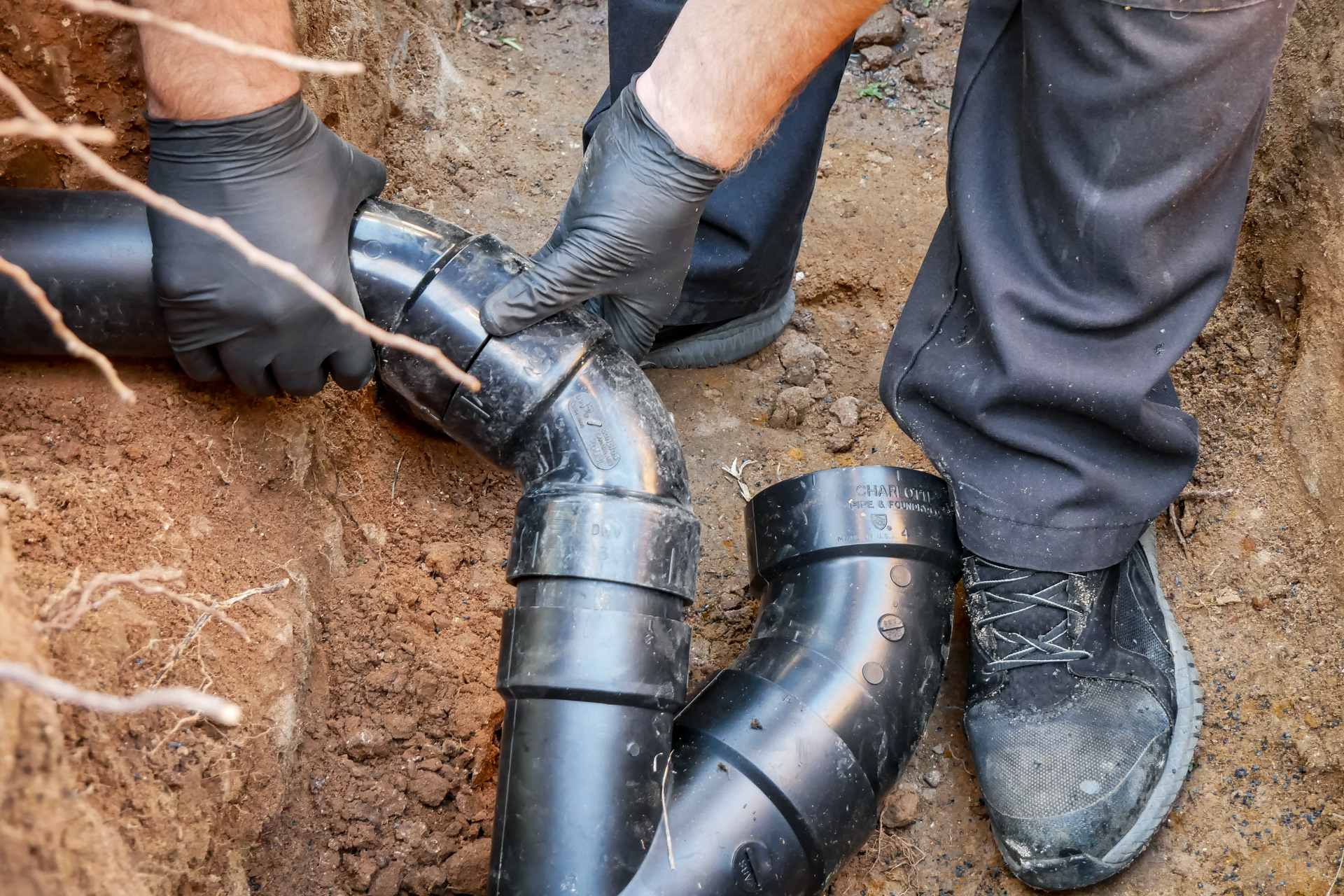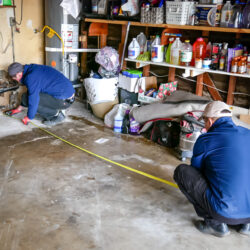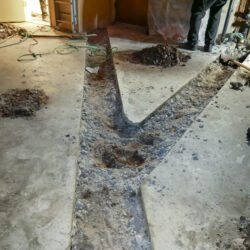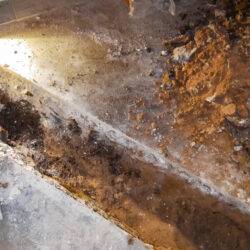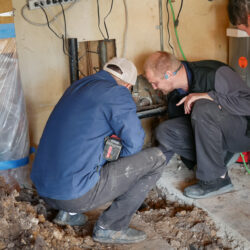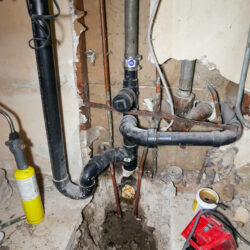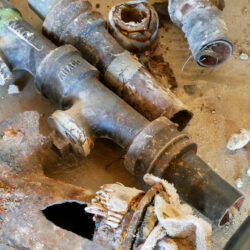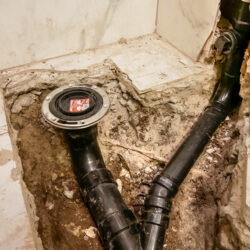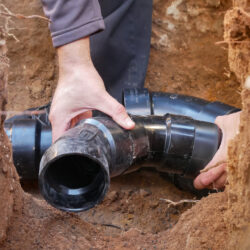How Smart Bathroom Drain Rerouting Saved the Customer Thousands of Dollars
Sewer line replacement in a private home doesn’t always mean tearing up floors, removing tile, and demolishing parts of the interior. In this project, Almco Plumbing showed how smart use of original construction blueprints, modern materials, and precise engineering allowed us to reroute a failing drain system through the garage—minimizing both cost and disruption. The entire job was completed in a single weekend, and the newly installed system is built to last over 100 years.
Contents
Customer’s Issue
A homeowner needed to replace a failing sewer pipe under the kitchen but wanted to avoid damaging the recently renovated interior. Upon further inspection, the kitchen drain line was found to be completely corroded and had broken apart, making it beyond repair.
To preserve the renovated space, Almco’s engineers proposed a reroute instead of digging through the kitchen floor and foundation. This solution would bypass the damaged section, saving the client thousands in reconstruction costs.
Using the home’s original utility schematics, the team designed a plan to reroute the sewer lines through the garage, connecting the kitchen, bathroom, and laundry room from the rear side of the house. The old kitchen pipe was left in place, fully disconnected from the city sewer system and sealed off to avoid further risk.
Sewer Reroute Process Step-by-Step
Technicians began by marking the new sewer routes. Using a concrete saw, they cut a trench opening into the garage floor and broke out the remaining concrete with jackhammers.
Debris was carefully collected on protective tarps to prevent contamination and make cleanup easier.
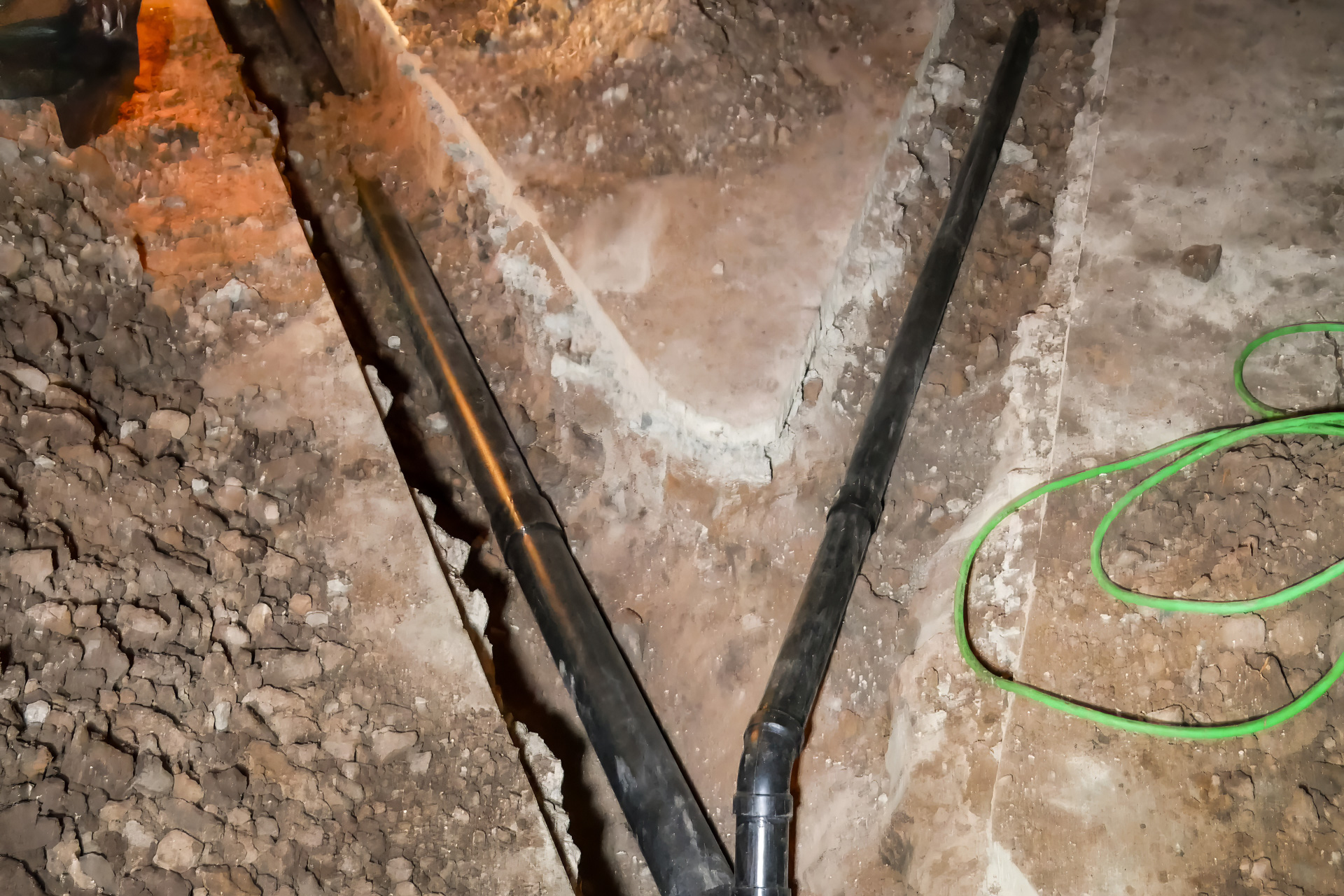
Two trenches were excavated about 1–2 feet deep:
- One connecting the kitchen and bathroom
- The other connecting the laundry room
New ABS pipes were cut and installed in the trenches. All joints, fittings, and elbows were sealed with high-strength polyester adhesive, ensuring leak-proof performance for the lifetime of the system (typically over 100 years).
In the bathroom, a portion of the concrete floor was also removed to replace the old, brittle pipe and install a new toilet drain. From there, a direct connection was made to the kitchen.
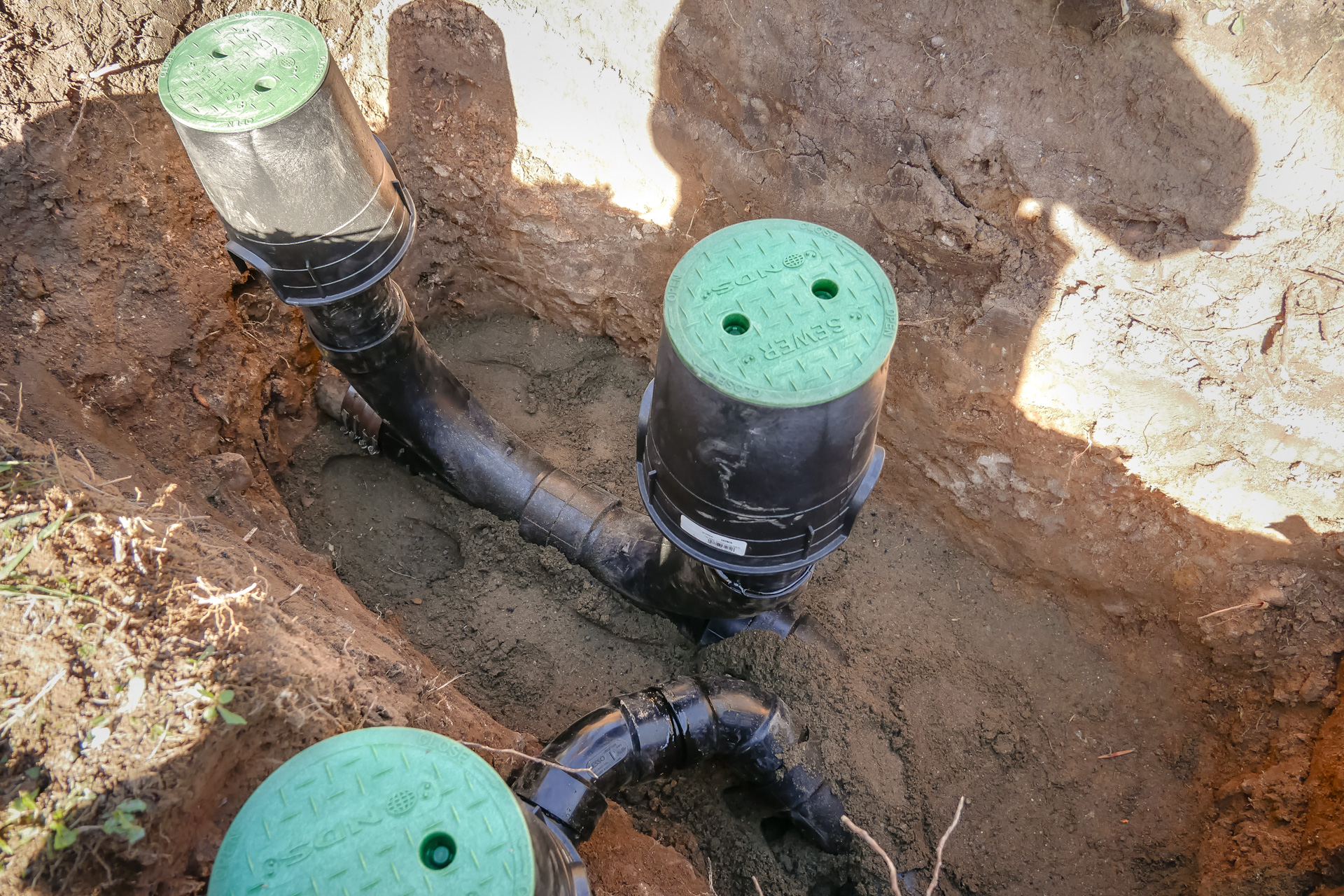
Next, the crew ran a new main sewer pipe from the house to the street connection:
- The lawn sod was carefully removed and placed in the shade on tarps to protect the roots
- A trench approximately 3 feet deep was dug to reach the city sewer main
- The trench was graded with a consistent slope to ensure smooth drainage and prevent wastewater buildup
The new ABS pipe, bonded with polyester adhesive, was laid in the trench and connected to the city sewer main with a secure stainless-steel coupling. Cleanout access points were installed near the house for future maintenance.
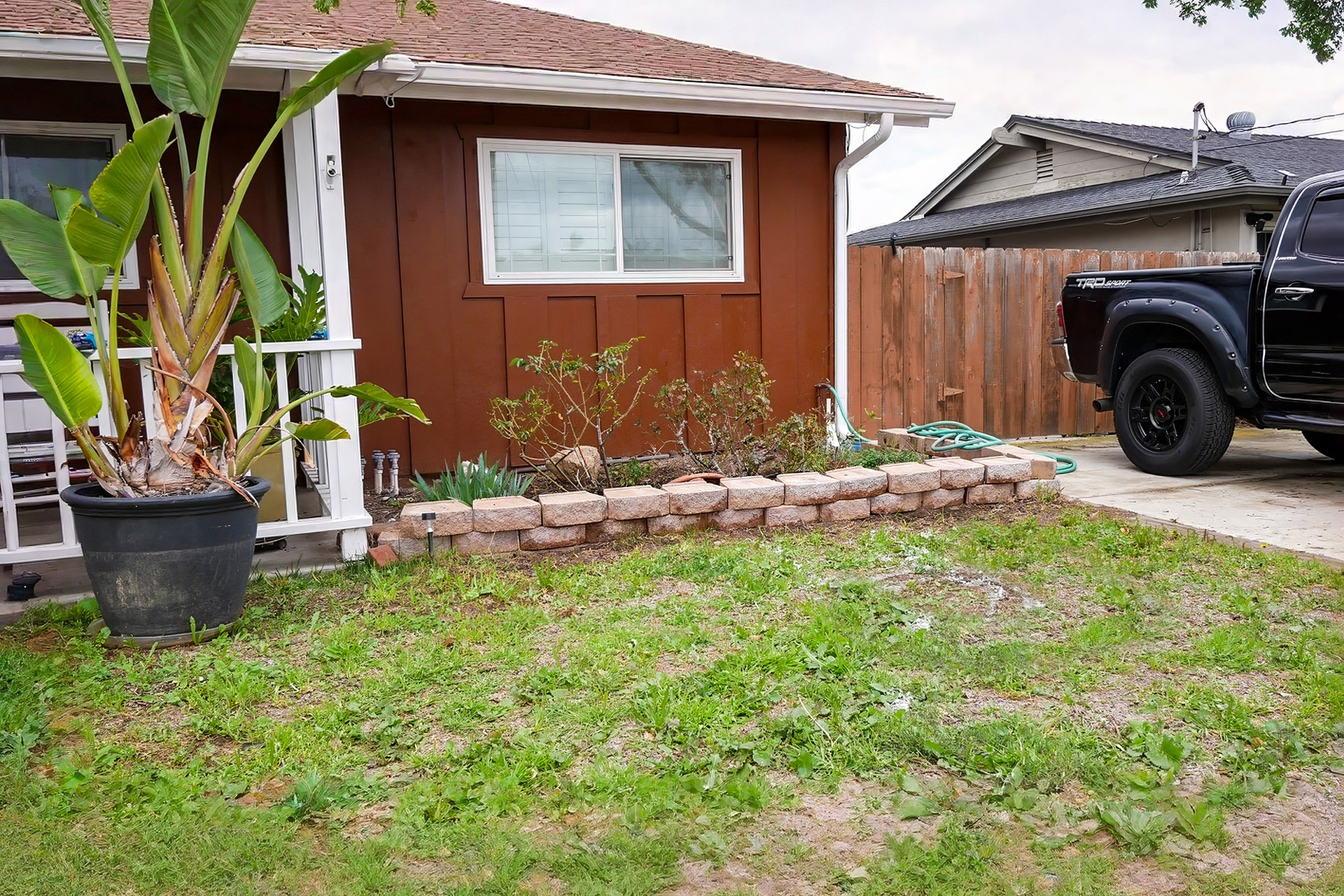
After testing the system for leaks, the crew backfilled the trench:
- The soil was compacted layer by layer to prevent future settling
- The sod was returned to its original place, leaving the yard looking exactly as it had before
Inside the garage and bathroom:
- Trenches were backfilled and compacted using pneumatic tampers
- A new concrete base was poured after reusing the original aggregate and rebar
- The top layer was leveled manually with a finishing trowel for a smooth, even floor
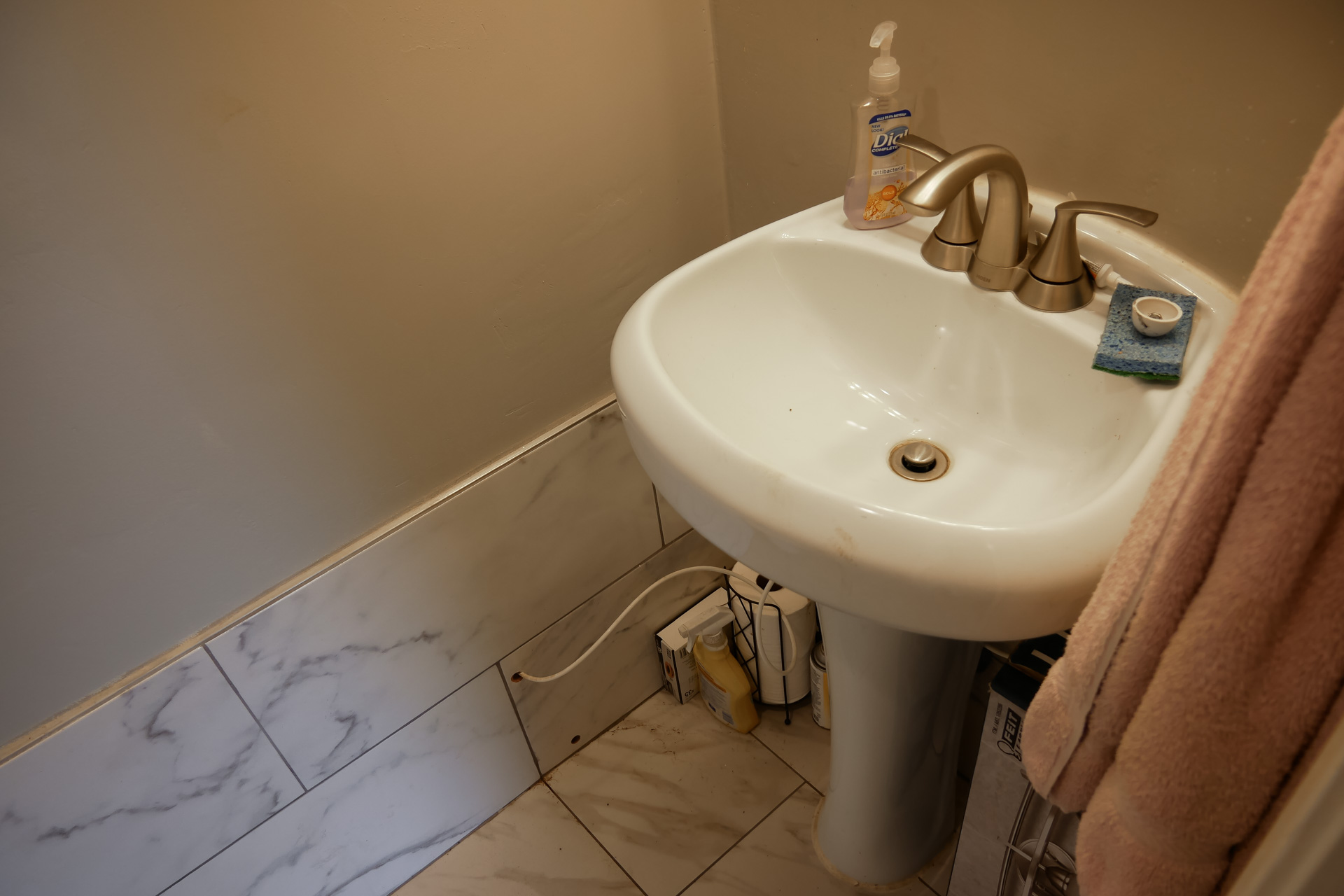
In the bathroom, new floor tile was installed, and the toilet and sink were reconnected.
In the laundry room, washer and dryer connections were restored.
Once the work was complete, all interior spaces looked exactly as they had before the project began.
Why Proper Planning Is Critical for Trench-Based Repairs
This project is a prime example of how smart planning and efficient design can reduce both the cost and time involved—even when traditional trenching methods are used.
By rerouting the system through the garage instead of disturbing the kitchen, Almco saved the homeowner thousands of dollars and avoided the need to restore a newly renovated space.
The use of long-lasting ABS piping and polyester adhesive ensures leak-free operation and environmental safety for the next 100 years. The entire job was completed in just three days—start to finish.
